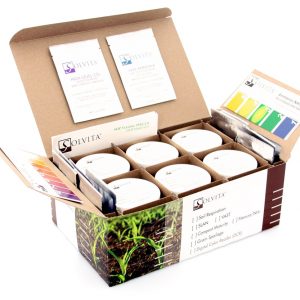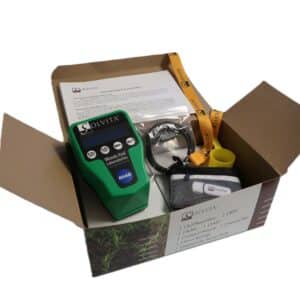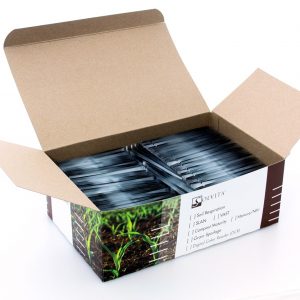Compost Quality
Compost Maturity Testing
Gain the full benefits of composting.
Solvita® is designed to readily enable practical, on-site compost quality testing.
Chemistry skills are not necessary to conduct an accurate test. Results are obtained in less than a day and provide both a useful guide to how far along compost is and a realistic interpretation of composting quality. Many composters worldwide employ Solvita® to monitor and ensure compost quality during the course of the entire composting process and report end-product quality.

What is associated with determining compost maturity?
In addition to common tests for C:N ratio and loss of heating during composting, accurate measurement of both carbon dioxide (CO2) and ammonia (NH3) emissions provides a definitive gauge of the maturing process. CO2 and NH3 are the two most common gases released in composting, represent nearly polar opposites of biology and chemistry. CO2 alone is odorless, non-toxic and “biogenic” as far as global carbon-cycling goes. Ammonia is a molecule with a high affinity to water (unlike CO2) and therefore dissolves in compost forming a high pH. The chemistry of NH3 is very unstable and one can frequently smell the gaseous form and can be somewhat toxic both within the compost to microorganisms and a malodorous and harmful gas.
Calculating the Compost Maturity Index is now made easy with the CMI Calculator.
Immaturity of Compost is Characterized as:
- High oxygen depletion rates which means high aeration requirements
- High heating potential when properly supplied with air
- Potentially anaerobic odors due to early stage decomposition
- A workplace aerosol hazard (while turning composts or storing compost indoors)
- Potential plant and animal harm due to phytotoxicity from incompletely decayed molecules
Field research over the decades has shown that compost that reaches the target endpoint is likely to be a highly desirable product.
Solvita®: a Maturity Test that differs from other Compost Tests
Solvita is a volumetric procedure, which means it is a test per unit volume of compost and not per unit weight. Volume measurements are realistic considering actual piles of compost which change rapidly in weight:volume aspects which significantly interact with behavior. When volumetric Solvita tests are compared to quantitative lab stability tests they may appear different depending if compost bulk-density is very low (porous, as in early stages) or high. This result is biologically relevant and relates to actual behavior. One advantage of measuring respiration per volume is that the results are also relevant for mixing growing media and building soils, a volume-dilution function. Solvita is therefore a very realistic means to characterize stability.
Solvita® lets Compost Itself Perform the Test
Solvita chemistry gels are highly reactive media which respond rapidly to the concentration of CO2 and NH3 gases as they are released naturally from compost into headspace of a test jar. No other equipment or special lab preparation is required. Conducting the compost test is fairly simple as long as some general rules are observed which are all carefully described in a User’s Manual. Information on the contents of a Solvita maturity kit are seen by visiting the Solvita store.
You Can Find Publications Demonstrating Application of Solvita® in Composting Assessment here.




